Résultats de recherche de titre
Articles 1492121 à 1492140 sur 1498776
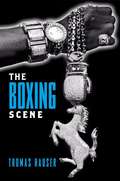
The Boxing Scene
Par Thomas Hauser. 2009
The Boxing Scene, Hauser's "provocative new anthology," contains all of his trademark insights and candor as he peels away layers…
of hypocrisy to reveal the men who make up the contemporary boxing landscape. Hauser exposes the inner workings of HBO Sports; examines the phenomenon of mixed martial arts as it relates to boxing; and records the amusing encounter between his 81-year-old mother and larger-than-life boxing impresario Don King. "The Boxing Scene" also updates Hauser's personal and professional thoughts on superstars like Oscar De La Hoya, Floyd Mayweather Jr., Ricky Hatton, Miguel Cotto, and Bernard Hopkins as well as fight promoter Bob Arum, announcer Bob Sheridan and a host of others.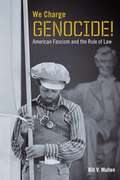
We Charge Genocide!: American Fascism and the Rule of Law
Par Bill V. Mullen. 2024
A revealing exploration of domestic fascism in the United States from the 1930s to the January 6th insurrection in Washington,…
D.C.In 1951, the Civil Rights Congress presented to the United Nations We Charge Genocide, a more than two-hundred-page petition that held the United States accountable for genocide against African Americans. This landmark text represented the dawn of Black Lives Matter and is as relevant today as it was then, as evidenced by the rise of white supremacist groups across the nation and the January 6th Capitol riot which disclosed the specter of a fascist revival in the US Tracing this specter to its roots, We Charge Genocide! provides an original interpretation of American fascism as a permanent and longstanding current in US politics dating to the origins of US settler-colonialism.Picking up where Angela Davis’s 1971 essay, “Political Prisoners, Prisons, and Black Liberation,” left off, We Charge Genocide! reveals how the United States legal system has contributed to the growth of fascist states and fascist movements domestically and internationally. American Studies scholar Bill V. Mullen contends that the preservation of a white supremacist world order—and the prevention of revolutionary threats to that order—structure the discourse and practice of US fascism. He names this fascist modality the “counterrevolution of law” in tribute to the radicals on the American Left, such as George Jackson, Angela Davis, Herbert Marcuse, and the Black Panther Party, who perceived the American state’s destruction of revolutionary groups and ideas as a distinctive form of American fascism. Mullen argues that US law, particularly US “race law,” has been an enabling mechanism for modalities of fascist rule that have locked historic blocs of non-white populations into an iron cage of legal and extralegal violence.To this end We Charge Genocide! offers a legal historiography of US fascism rooted in law’s capacity to legitimate and sustain racial domination. By recovering the legacy of important organizations, such as the Civil Rights Congress and Black Panther Party, which have both theorized and resisted American legal fascism, Mullen demonstrates how their work and critical theorists like Davis, Marcuse, Jackson, Walter Benjamin, and Ernst Fraenkel illuminate the threat of American legal fascism to its most vulnerable racialized victims of state violence in our time, including gender and transgender violence.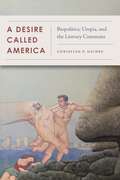
A Desire Called America: Biopolitics, Utopia, and the Literary Commons
Par Christian Haines. 2019
Critics of American exceptionalism usually view it as a destructive force eroding the radical energies of social movements and aesthetic…
practices. In A Desire Called America, Christian P. Haines confronts a troubling paradox: Some of the most provocative political projects in the United States are remarkably invested in American exceptionalism. Riding a strange current of U.S. literature that draws on American exceptionalism only to overturn it in the name of utopian desire, Haines reveals a tradition of viewing the United States as a unique and exemplary political model while rejecting exceptionalism’s commitments to nationalism, capitalism, and individualism. Through Walt Whitman, Emily Dickinson, William S. Burroughs, and Thomas Pynchon, Haines brings to light a radically different version of the American dream—one in which political subjects value an organization of social life that includes democratic self-governance, egalitarian cooperation, and communal property.A Desire Called America brings utopian studies and the critical discourse of biopolitics to bear upon each other, suggesting that utopia might be less another place than our best hope for confronting authoritarianism, neoliberalism, and a resurgent exclusionary nationalism.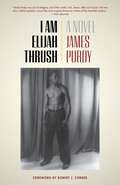
I Am Elijah Thrush
Par James Purdy. 1972
On its surface, I Am Elijah Thrush is the story of Millicent De Frayne and her sensational half-century campaign to…
win the love of Elijah Thrush. Elijah, after ruining the lives of countless men and women, is finally in love “incorrectly, if not indecently,” with his great-grandson, Bird of Heaven. To support an unusual habit, a young Black man, Albert Peggs, reluctantly agrees to tell their remarkable story. It is in this telling that the ambitions, desires, and true natures of Elijah, Millicent, and Albert come to light. With a delicately controlled balance of whimsy and pathos, James Purdy gives us this comedy of the heroic, the tragic, and the truly bizarre.Met with critical bewilderment upon its initial publication fifty years ago, this new edition offers a Foreword by Robert J. Corber illuminating Purdy’s “complicated allegory” of objectification, desire, and race in the immediate post–civil rights moment.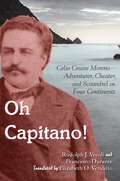
Oh Capitano!: Celso Cesare Moreno—Adventurer, Cheater, and Scoundrel on Four Continents
Par Francesco Durante, Rudolph J. Vecoli. 2018
The story of Celso Cesare Moreno, one of the most famous of the emigrant Italian elites or "prominenti." Moreno traveled…
the world lying, scheming, and building an extensive patron/client network to to establish his reputation as a middleman and person of significance. Through his machinations, Moreno became a critical player in the expansion of western trade and imperialism in Asia, the trafficking of migrant workers and children in the Atlantic, and the conflicts of Americans and natives over the fate of Hawaii, and imperial competitions of French, British, Italian and American governments during a critically important era of imperial expansion.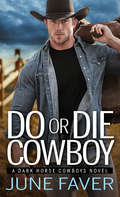
Do or Die Cowboy (Dark Horse Cowboys #1)
Par June Faver. 2018
Take the suspense and action of B.J. Daniels's Montana Justice series, add the loyal cowboys of Joanne Kennedy's Cowboys of…
Decker Ranch, mix with June Faver's authentic voice and genuine family dynamics, and you won't be able to put this one down!Cowboy musician Tyler Garrett has a once-in-a-lifetime chance to put aside his rough-and-tumble rancher's lifestyle and realize his dream. There's no room to add love in the mix. He's on the road to Dallas to record a demo when that dream gets kicked sideways by a beautiful woman on the run.Leah Benson will do whatever it takes to keep her daughter safe. But when her dangerous past catches up with her, she needs more than one night with a cowboy—she needs a hero. Good thing Tyler Garrett was born and bred for the role, and she and her daughter can finally settle down as the lucky ones who found a forever home.Why readers love Do or Die Cowboy: "A cowboy love story that is guaranteed melt-your-heart romance."—Romancing the Book "[Her characters] just sort of reach out and draw you in…a very entertaining story."—Harlequin Junkie "An intriguing mix of personalities and circumstances that drew me into their world."—Keeper Bookshelf
The Civil War and the Summer of 2020 (Reconstructing America)
Par Hilary N. Green, Andrew L. Slap. 2024
Investigates how Americans have remembered violence and resistance since the Civil War, including Confederate monuments, historical markers, college classrooms, and…
history books.George Floyd’s murder in the summer of 2020 sparked a national reckoning for the United States that had been 400 years in the making. Millions of Americans took to the streets to protest both the murder and the centuries of systemic racism that already existed among European colonists but transformed with the arrival of the first enslaved African Americans in 1619. The violence needed to enforce that systemic racism for all those years, from the slave driver’s whip to state-sponsored police brutality, attracted the immediate attention of the protesters. The resistance of the protesters echoed generations of African Americans’ resisting the violence and oppression of white supremacy. Their opposition to violence soon spread to other aspects of systemic racism, including a cultural hegemony built on and reinforcing white supremacy. At the heart of this white supremacist culture is the memory of the Civil War era, when in 1861 8 million white Americans revolted against their country to try to safeguard the enslavement of 4 million African Americans.The volume has three interconnected sections that build on one another. The first section, “Violence,” explores systemic racism in the Civil War era and now with essays on slavery, policing, and slave patrols. The second section, titled “Resistance,” shows how African Americans resisted violence for the past two centuries, with essays discussing matters including self-emancipation and African American soldiers. The final section, “Memory,” investigates how Americans have remembered this violence and resistance since the Civil War, including Confederate monuments and historical markers.This volume is intended for nonhistorians interested in showing the intertwined and longstanding connections between systemic racism, violence, resistance, and the memory of the Civil War era in the United States that finally exploded in the summer of 2020.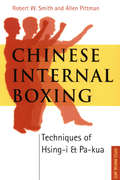
Chinese Internal Boxing
Par Allen Pittman. 1989
Perfect for people of all ages and nearly any level of health, Chinese internal boxing does not depend on muscular…
strength. Instead, its power is drawn from the cultivation and practical application of internal energy, or ch'i.Chinese Internal Boxing: Techniques of Hsing-I & Pa-Kua is an in-depth guide to the practice of two styles of Chinese internal boxing. Through clear, concise instructions, photos and diagrams, it invites readers to experience and understand the traditional, authentic methods of this once secretive art.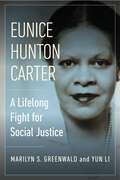
Eunice Hunton Carter: A Lifelong Fight for Social Justice
Par Yun Li, Marilyn Greenwald. 2021
2022 PROSE Awards Category Winner - Biography & AutobiographyForeword INDIES Book of the Year Awards - 2021 BRONZE Winner for…
BiographyThe fascinating biography of Eunice Hunton Carter, a social justice and civil rights trailblazer and the only woman prosecutor on the Luciano trial Eunice Hunton Carter rose to public prominence in 1936 as both the only woman and the only person of color on Thomas Dewey’s famous gangbuster team that prosecuted mobster Lucky Luciano. But her life before and after the trial remains relatively unknown. In this definitive biography on this trailblazing social justice activist, authors Marilyn S. Greenwald and Yun Li tell the story of this unknown but critical pioneer in the struggle for racial and gender equality in the twentieth century.Carter worked harder than most men because of her race and gender, and Greenwald and Li reflect on her lifelong commitment to her adopted home of Harlem, where she was viewed as a role model, arts patron, community organizer, and, later, as a legal advisor to the United Nations, the National Council of Negro Women, and several other national and global organizations.Carter was both a witness to and a participant in many pivotal events of the early and mid– twentieth century, including the Harlem riot of 1935 and the social scene during the Harlem Renaissance.Using transcripts, letters, and other primary and secondary sources from several archives in the United States and Canada, the authors paint a colorful portrait of how Eunice continued the legacy of the Carter family, which valued education, perseverance, and hard work: a grandfather who was a slave who bought his freedom and became a successful businessman in a small colony of former slaves in Ontario, Canada; a father who nearly single-handedly integrated the nation’s YMCAs in the Jim Crow South; and a mother who provided aid to Black soldiers in France during World War I and who became a leader in several global and domestic racial equality causes.Carter’s inspirational multi-decade career working in an environment of bias, segregation, and patriarchy in Depression-era America helped pave the way for those who came after her.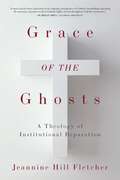
Grace of the Ghosts: A Theology of Institutional Reparation
Par Jeannine Hill Fletcher. 2025
A profound new volume that reckons with the history of an American Catholic Church embedded in and drawing benefits from…
White supremacyFor the Church to become a truly anti-racist institution, we must first understand how today’s racial challenges are embedded in the theo-logic of American Christianity and the cultural production of our Christian educational institutions. As colleges and universities reckon with their involvement in slavery, Grace of the Ghosts asks Christian-affiliated institutions (of congregation, school, and media) to expand this reckoning with attention to the many ways they have been embedded in and drew benefits from American systems of White supremacy.Too often, White Christian histories render White Christians as the “good guys” in order to make a brutal history plausible and thus erase countless injustices committed against Indigenous, Black, Latinx, and Asian peoples. Author Jeannine Hill Fletcher writes instead a US Catholic history that sheds light on the crimes committed against these ancestors by members of their own faith community. Grace of the Ghosts focuses on specific case studies of Catholic educational and ecclesial institutions, journeying through numerous microhistories to provide an accessible program to work toward the flourishing of a multiracial and multicultural Church. Hill Fletcher digs deeply into the details of Jesuit slaveholding at Georgetown, the expansion of Church networks on the frontiers to the West and South and emergent cities to the North, and the extension of the work of religious women from the East Coast to the Midwest. The volume considers the implications of Catholic involvement in Indian Boarding Schools and envisions alternative possibilities in the Catholic activism of the United Farmworkers. Each microhistory elevates the theological insights that emerge from those who withstood the assaults of White Christian supremacy. Hill Fletcher then orients the reader forward by envisioning possibilities of repair. Recognizing that this will require extensive and ongoing work, the book closes with the consideration of spiritual capital (including a reclamation of Ignatius’s Spiritual Exercises) that might sustain us as we write the next chapter in the nation’s long struggle against White supremacy.Much work must be done for reparation, reconciliation, and repair to unfold fully. Grace of the Ghosts provides a bridge to institutional accountability for past failings and a path toward becoming transformative institutions for the future.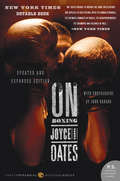
On Boxing
Par Joyce Carol Oates. 2006
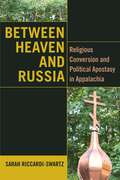
How is religious conversion transforming American democracy? In one corner of Appalachia, a group of American citizens has embraced the…
Russian Orthodox Church and through it Putin’s New Russia. Historically a minority immigrant faith in the United States, Russian Orthodoxy is attracting Americans who look to Russian religion and politics for answers to Western secularism and the loss of traditional family values in the face of accelerating progressivism. This ethnography highlights an intentional community of converts who are exemplary of much broader networks of Russian Orthodox converts in the United States. These converts sought and found a conservatism more authentic than Christian American Republicanism and a nationalism unburdened by the broken promises of American exceptionalism. Ultimately, both converts and the Church that welcomes them deploy the subversive act of adopting the ideals and faith of a foreign power for larger, transnational political ends.Offering insights into this rarely considered religious world, including its far-right political roots that nourish the embrace of Putin’s Russia, this ethnography shows how religious conversion is tied to larger issues of social politics, allegiance, (anti)democracy, and citizenship. These conversions offer us a window onto both global politics and foreign affairs, while also allowing us to see how particular U.S. communities are grappling with social transformations in the twenty-first century. With broad implications for our understanding of both conservative Christianity and right-wing politics, as well as contemporary Russian–American relations, this book provides insight in the growing constellations of far-right conservatism. While Russian Orthodox converts are more likely to form the moral minority rather than the moral majority, they are an important gauge for understanding the powerful philosophical shifts occurring in the current political climate in the United States and what they might mean for the future of American values, ideals, and democracy.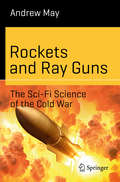
Rockets and Ray Guns: The Sci-Fi Science of the Cold War (Science and Fiction)
Par Andrew May. 2018
The Cold War saw scientists in East and West racing to create amazing new technologies, the like of which the…
world had never seen. Yet not everyone was taken by surprise. From super-powerful atomic weapons to rockets and space travel, readers of science fiction (SF) had seen it all before. Sometimes reality lived up to the SF vision, at other times it didn’t. The hydrogen bomb was as terrifyingly destructive as anything in fiction, while real-world lasers didn't come close to the promise of the classic SF ray gun. Nevertheless, when the scientific Cold War culminated in the Strategic Defence Initiative of the 1980s, it was so science-fictional in its aspirations that the media dubbed it “Star Wars”. This entertaining account, offering a plethora of little known facts and insights from previously classified military projects, shows how the real-world science of the Cold War followed in the footsteps of SF – and how the two together changed our perception of both science and scientists, and paved the way to the world we live in today.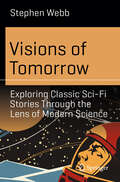
This anthology invites readers to revisit twelve timeless stories from visionary authors while pondering the scientific advancements they foreshadowed, making…
it ideal for fans of both science fiction and science. In Algernon Blackwood’s A Victim of Higher Space, the concept of extra spatial dimensions is explored, while Miles J. Breuer’s The Gostak and the Doshes examines time as a dimension in relativity. Stanley Waterloo’s Love and a Triangle touches on efforts to communicate with extraterrestrial intelligence, and Max Adeler’s The Fortunate Island raises questions about humanity’s readiness for first contact with alien life. Machine learning and AI feature in Edward L. Sabin’s The Supersensitive Golf Ball, while Saki’s Filboid Studge explores targeted advertising’s transformation through AI. Edward Bellamy’s With the Eyes Shut predicts devices like smartphones and sparks discussions on the future of scientific publishing. G.K. Chesterton’s The Tremendous Adventures of Major Brown delves into augmented, virtual, and mixed reality technologies. Edgar Wallace’s The Black Grippe provides a historical lens on pandemics and communication of scientific uncertainty. J. Arbuthnot Wilson’s PAUSODYNE looks at suspended animation and modern cryonics, while Edgar Allan Poe’s The Facts in the Case of M. Valdemar tackles advances in medical technology and definitions of death. Finally, Guy de Maupassant’s The Horla explores the potential for humanity to be supplanted by new life forms.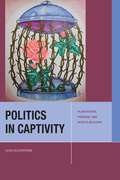
Politics in Captivity: Plantations, Prisons, and World-Building (Just Ideas)
Par Lena Zuckerwise. 2024
From the 1811 German Coast Slave Rebellion to the 1971 Attica Prison Uprising, from the truancy of enslaved women to…
the extreme self-discipline exercised by prisoners in solitary confinement, Black Americans have, through time, resisted racial regimes in extraordinary and everyday ways. Though these acts of large and small-scale resistance to slavery and incarceration are radical and transformative, they have often gone unnoticed. This book is about Black rebellion in captivity and the ways that many of the conventional well-worn constructs of academic political theory render its political dimensions obscure and indiscernible. While Hannah Arendt is an unlikely theorist to figure prominently in any discussion of Black politics, her concepts of world and worldlessness offer an indispensable framework for articulating a theory of resistance to chattel and carceral captivity. Politics in Captivity begins by taking seriously the ways in which slavery and incarceration share important commonalities, including historical continuity. In Zuckerwise’s account of this commonality, the point of connection between enslaved and incarcerated people is not exploited labor, but rather resistance. The relations between the rebellions of both groups appear in the writings of Muhammed Ahmad, Angela Davis, George Jackson, Ruchell Magee, and Assata Shakur, a genre Zuckerwise calls Black carceral political thought. The insights of these thinkers and activists figure into Zuckerwise’s analyses of largescale uprisings and quotidian practices of resistance, which she conceives as acts of world-building, against conditions of forced worldlessness. In a moment when a collective racial reckoning is underway; when Critical Race Theory is a target of the Right; when prison abolition has become more prominent in mainstream political discourse, it is now more important than ever to look to historical and contemporary practices of resistance to white domination.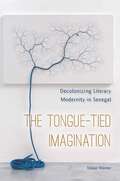
The Tongue-Tied Imagination: Decolonizing Literary Modernity in Senegal
Par Tobias Warner. 2019
Winner, 2021 African Literature Association First Book AwardShould a writer work in a former colonial language or in a vernacular?…
The language question was one of the great, intractable problems that haunted postcolonial literatures in the twentieth century, but it has since acquired a reputation as a dead end for narrow nationalism. This book returns to the language question from a fresh perspective. Instead of asking whether language matters, The Tongue-Tied Imagination explores how the language question itself came to matter. Focusing on the case of Senegal, Warner investigates the intersection of French and Wolof. Drawing on extensive archival research and an under-studied corpus of novels, poetry, and films in both languages, as well as educational projects and popular periodicals, the book traces the emergence of a politics of language from colonization through independence to the era of neoliberal development. Warner reads the francophone works of well-known authors such as Léopold Senghor, Ousmane Sembène, Mariama Bâ, and Boubacar Boris Diop alongside the more overlooked Wolof-language works with which they are in dialogue.Refusing to see the turn to vernacular languages only as a form of nativism, The Tongue-Tied Imagination argues that the language question opens up a fundamental struggle over the nature and limits of literature itself. Warner reveals how language debates tend to pull in two directions: first, they weave vernacular traditions into the normative patterns of world literature; but second, they create space to imagine how literary culture might be configured otherwise. Drawing on these insights, Warner brilliantly rethinks the terms of world literature and charts a renewed practice of literary comparison.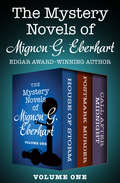
The Mystery Novels of Mignon G. Eberhart Volume One: House of Storm, Postmark Murder, and Call After Midnight
Par Mignon G. Eberhart. 1956
In these three novels of romantic suspense, the Edgar Award winner proves once again that she &“can weave an almost…
flawless mystery&” (The New Yorker). In a prolific career that spanned seven decades, Mignon G. Eberhart made a name for herself as &“America&’s Agatha Christie.&” Praised by fellow writers ranging from Gertrude Stein, who called her &“one of the best mystifiers in America,&” to Mary Higgins Clark, who hailed her as &“one of America&’s favorite writers,&” Eberhart penned classic mystery novels of romantic suspense, usually with female leads and often set in exotic locales. The three novels collected here—written in 1949, 1955, and 1964—offer further evidence that &“Eberhart&’s name on mysteries is like sterling on silver&” (Miami News). House of Storm: On a Caribbean island in the path of a hurricane, Nonie is torn between the older man she&’s engaged to and the man she&’s truly in love with—a suspected murderer. &“Mounting tension . . . one of [Eberhart&’s] most successful glamour romances yet.&” —The New York Times Postmark Murder: Following the death of a wealthy Chicago businessman, his ward Laura March must protect her fellow heir—an orphaned girl from Poland—and clear herself of a murder after a mysterious stranger is stabbed. &“A nice example of [Eberhart&’s] powers . . . Intelligently complicated.&” —The New Yorker Call After Midnight: A late-night phone call from Jenny Vleedam&’s ex-husband revealing that his girlfriend has been shot places the divorcée in danger. &“Eberhart tells one of her better mystery-romances in Call After Midnight.&” —The New York Times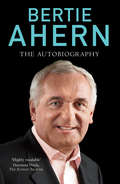
Bertie Ahern Autobiography: The Autobiography
Par Bertie Ahern. 2009
Bertie Ahern, three times Irish Taoiseach, is often described as an enigma. The Old IRA man's son who delivered peace…
in Northern Ireland. A working class boy responsible for the Celtic Tiger. The man of faith who ushered in progressive, cosmopolitan secular Ireland. An ardent nationalist admired by European leaders. 'I know 25 per cent of Bertie Ahern', said his finance minister, Charlie McCreevy, 'and that's 24 per cent more than anyone else.'Now in this frank and revealing autobiography, Ahern gives his own account of a remarkable political life and the personal story that accompanies it. He shows the cost to his family of a life played out in the public eye and, for the first time, discloses what really happened in his final weeks in power.Here for the first time is the truth behind the man who is Bertie.Ahern has been at the cutting edge of Irish politics for over three decades. He was first elected to Dáil Éireann in the Fianna Fáil landslide victory in 1977 that saw Jack Lynch returned as Taoiseach. In 1982, Charles Haughey appointed him Government Chief Whip. In volatile political times, he strongly supported Haughey during three challenges to his leadership of Fianna Fáil.In 1987, Bertie Ahern received his first cabinet portfolio as Minister for Labour. It was a time when the Irish economy was in crisis. Ireland had a higher debt per head than Ethiopia or Sudan. Unemployment stood at 16%. Ahern negotiated Ireland's first social partnership agreement, which underpinned economic recovery and put in place the foundations for a period of sustained growth. In 1991, he was appointed Minister for Finance. International commentators first began to refer to 'Ireland's Tiger economy' in this period. When Bertie Ahern left the Department of Finance in late 1994, for the first time in almost 30 years, Ireland had a budget surplus.Bertie Ahern succeeded Albert Reynolds as leader of Fianna Fáil in November 1994. Following the General Election in 1997, he became Ireland's youngest ever Taoiseach. The Ahern Era was a time of unprecedented progress in Irish society. Over the course of his tenure in office, Ireland's economy out-performed that of every other European country. For the first time ever, the number of people in employment in the State reached 2 million.Working closely with Bill Clinton and Tony Blair, Ahern won widespread acclaim for his perseverance and skill in negotiating the Good Friday Agreement, which has provided the political framework for a lasting peace in Northern Ireland.On the international stage, he was a respected figure who enjoyed an acclaimed Presidency of the European Council in 2004. He presided over the completion of the largest ever expansion of the EU and concluded negotiations on a European constitution. He is one of only five visiting statesmen to have addressed both the United States Congress and the Houses of Parliament in Westminster.At home, Ahern enjoyed phenomenal electoral support. He was the first Taoiseach since 1944 to win three successive General Elections.Bertie Ahern resigned on 6th May, 2008. He had served for ten years, ten months and ten days as Taoiseach.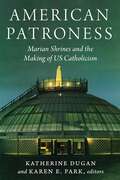
American Patroness: Marian Shrines and the Making of US Catholicism (Catholic Practice in the Americas)
Par Katherine Dugan and Karen E. Park. 2024
A vital collection of interdisciplinary essays that illuminates the significance of Marian shrines and promises to teach scholars how to…
“read” them for decades to come.American Patroness: Marian Shrines and the Making of US Catholicism is a collection of twelve essays that examine the historical and contemporary roles of Marian shrines in US Catholicism. The essays in this collection use historical, ethnographic, and comparative methods to explore how Catholics have used Marian devotion to make an imprint on the physical and religious landscape of the United States. Using the dynamic malleability of Marian shrines as a starting place for studying US Catholicism, each chapter reconsiders the American religious landscape from the perspective of a single shrine to Mary and asks: What does this shrine reveal about US Catholicism and about American religion?Each of the contributors in American Patroness examines why and how Marian shrines persist in the twenty-first century and subsequently uses that examination to re-read contemporary US Catholicism. Because shrines are not neutral spaces—they reflect and shape the elastic yet strict boundaries of what counts as Catholic identity, and who controls prayer practices—the studies in this collection also shed light on the contested dynamics of these holy sites. American Patroness demonstrates that Marian shrines continue to be places where an American Catholic identity is continuously worked on, negotiations about power occur, and Marian relationships are fostered and nurtured in spaces that are simultaneously public and intimate.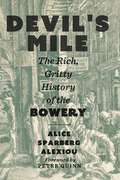
Devil's Mile: The Rich, Gritty History of the Bowery
Par Alice Sparberg Alexiou. 2024
Devil’s Mile tells the rip-roaring story of New York’s oldest and most unique streetThe Bowery was a synonym for despair…
throughout most of the 20th century. The very name evoked visuals of drunken bums passed out on the sidewalk, and New Yorkers nicknamed it “Satan’s Highway,” “The Mile of Hell,” and “The Street of Forgotten Men.” For years the little businesses along the Bowery—stationers, dry goods sellers, jewelers, hatters—periodically asked the city to change the street’s name. To have a Bowery address, they claimed, was hurting them; people did not want to venture there.But when New York exploded into real estate frenzy in the 1990s, developers discovered the Bowery. They rushed in and began tearing down. Today, Whole Foods, hipster night spots, and expensive lofts have replaced the old flophouses and dive bars, and the bad old Bowery no longer exists.In Devil’s Mile, Alice Sparberg Alexiou tells the story of the Bowery, starting with its origins, when forests covered the surrounding area, and through the pre–Civil War years, when country estates of wealthy New Yorkers lined this thoroughfare. She then describes the Bowery’s deterioration in stunning detail, starting in the post-bellum years. She ends her historical exploration of this famed street in the present, bearing witness as the old Bowery buildings, and the memories associated with them, are disappearing.